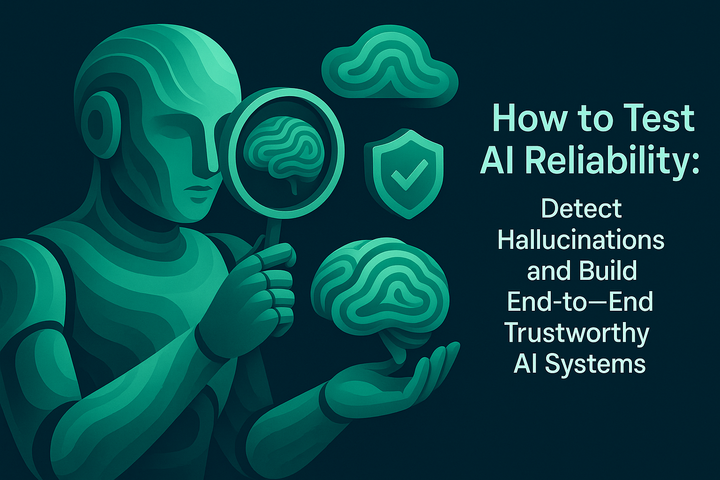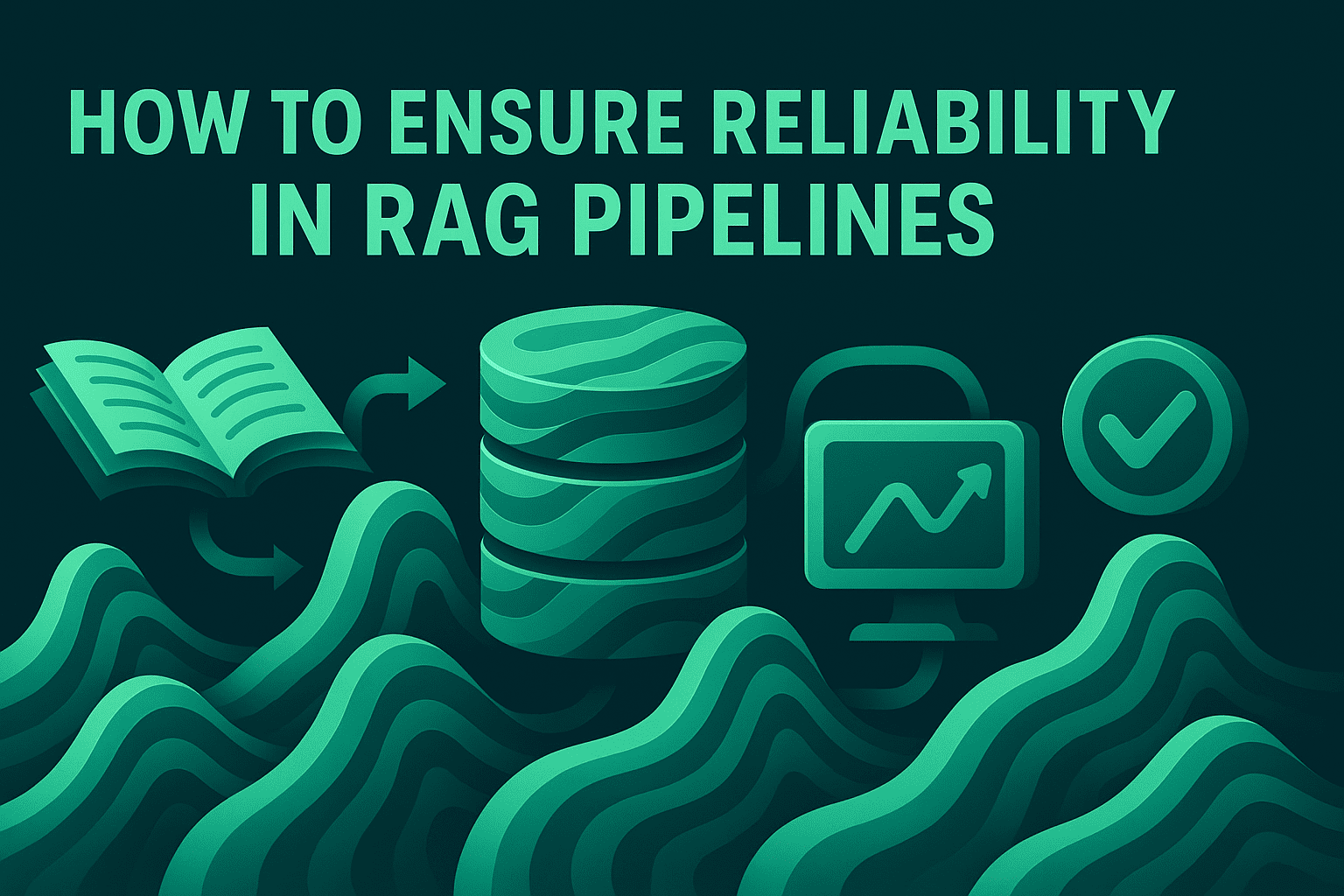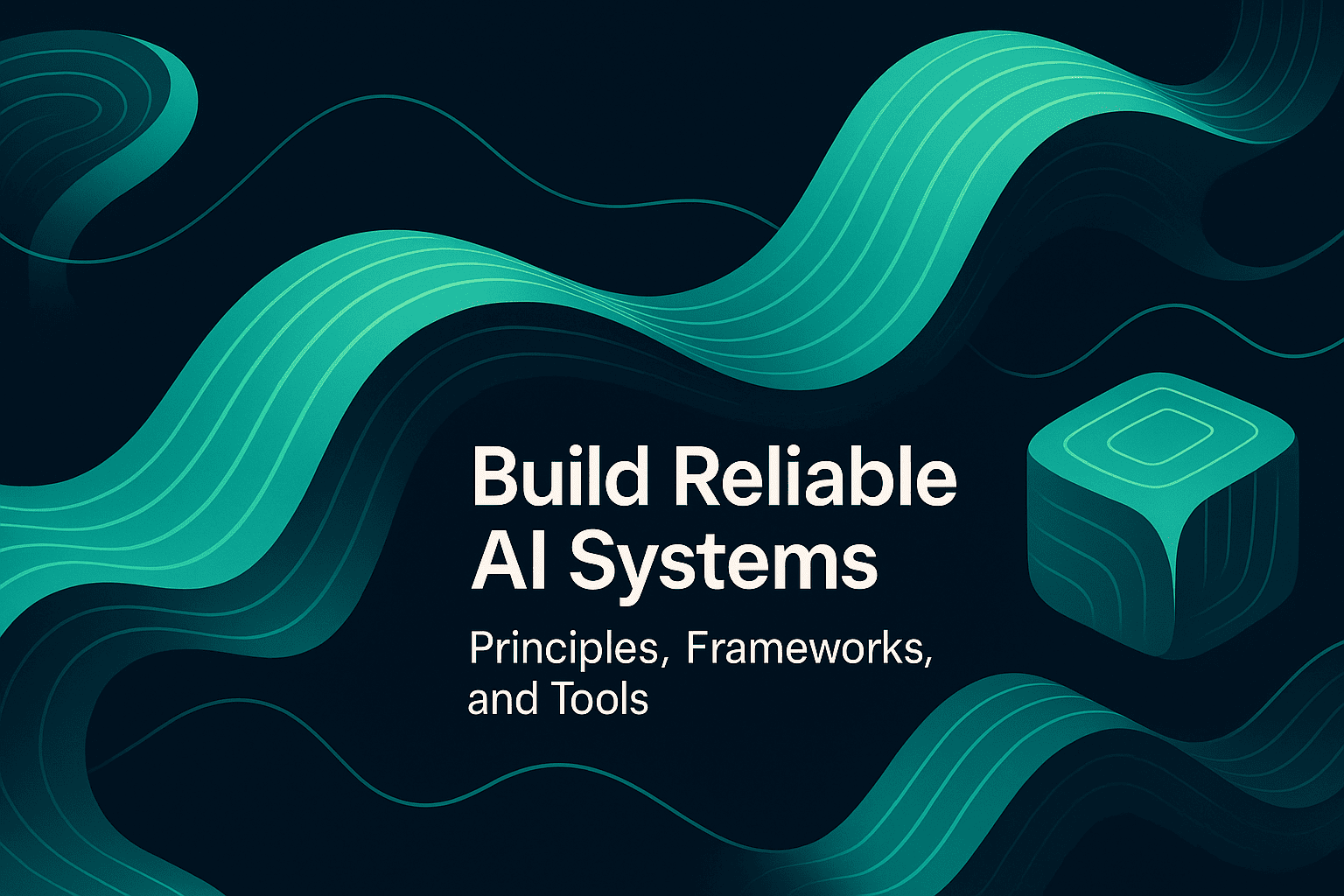AI Reliability in Practice: What It Means and How to Get It Right

TL DR ;
Reliability is the foundation of agentic systems. Teams shipping AI agents must ensure their applications perform consistently, stay aligned with policies, and recover gracefully from failures. This article translates reliability principles into a practical, end-to-end approach across evaluation, simulation, observability, and iteration.
What Reliability Means for AI Systems
Reliable AI systems behave consistently within defined parameters, maintain safety boundaries, and handle edge cases gracefully despite non-deterministic model behavior and evolving inputs. This requires disciplined lifecycle controls: clear metrics, robust scenario-based testing, deep observability, and continuous evaluation loops.
This framing aligns with trustworthy AI principles (accountability, explainability, fairness, privacy, and safety) outlined by standards bodies like NIST. For agentic applications, failures are often subtle quality regressions rather than hard errors. A customer support agent might provide correct but unhelpful responses, or a research assistant might cite sources that don't support their claims.
McKinsey reports that while over 90% of companies plan to increase AI investment, only a small fraction (under 5%) have achieved maturity in scaled deployment. This stems from treating reliability as an afterthought rather than a foundational infrastructure.
Core Principles: Governance, Measurement, and Testing
Accountability and Auditability
Use prompt versioning and controlled rollout policies to track changes, deploy updates gradually, and localize regressions. Every prompt change should be treated like code, with diffs, reviews, and staged deployments. Distributed tracing must capture inputs, outputs, tools, retrievals, timing, and custom attributes so teams can understand why the agent responded as it did.
Policy Enforcement Layers
Combine deterministic rules (format validation, output constraints), statistical monitors (metric distributions, anomaly detection), LLM-as-a-judge evaluators for subjective quality, and human-in-the-loop review for high-stakes decisions. No single layer catches all failure modes. Defense in depth is essential.
Define Reliability Metrics That Reflect User Impact
Set a concise operational metric set and track it consistently:
- Task success rate at the session level for core user journeys
- Tool call error rate segmented by external failures versus bad parameters
- Step completion rate for planned workflow steps
- Latency budgets (P50/P95) per turn and per session
- Guardrail trigger rate for policy and safety checks
- Escalation rate to human handoffs or fallback flows
- Drift alerts against recent baselines and cohorts
These metrics form your SLOs and dashboards, guiding pre-release evaluation, production monitoring, and regression analysis. Many engineering teams target task success rates above 85%, tool errors below 3%, and loop containment above 99% as reliability baselines.
Simulate Before You Ship: Scenario-Based Testing
Most agent failures only surface in multi-turn, constraint-heavy conversations. Scenario-based testing validates agent behavior across personas, tools, and context sources before deployment.
Design Scenarios That Encode Reality
Each scenario should capture user goals and business policy context, persona traits and expertise levels (frustrated customer, novice user, domain expert), tool availability and RAG context sources, and multi-dimensional success criteria: task completion, policy compliance, faithfulness, citation quality, tone.
Run multi-turn simulations at scale and attach evaluators for faithfulness, toxicity, clarity, context precision/recall/relevance, and latency/cost. Convert production failures into permanent scenarios to prevent repeat incidents. See this guide to simulation-based testing for more.
Common Failure Modes
Scenario testing reliably exposes issues that single-turn tests miss:
- Routing errors where the agent selects the wrong tool or skips required steps
- Weak grounding due to poor retrieval relevance, leading to hallucination risks
- Safety violations triggered by adversarial inputs or ambiguous instructions
- Context loss during multi-agent handoffs or long conversations
- Termination failures that lead to loops or stalled sessions
Encode these as scenarios with explicit evaluator criteria. Re-run simulations after prompt changes and model updates to validate fixes early. For implementation details on simulation workflows, see agent simulation documentation.
Observability in Production: Tracing, Logging, and Online Evals
Traditional monitoring is insufficient for agentic systems. You need granular, AI-specific observability:
Agent Tracing Across Workflows
Distributed tracing captures inputs, outputs, tool calls, retrieval operations, timing, and custom attributes. This enables root cause analysis: why was this tool selected? Which step failed? Was the failure external or parameter-driven? Do similar patterns recur in specific user cohorts?
Session-Level Logging
Preserve context and cross-turn dependencies to enable reproduction and trajectory analysis. When a user reports "the agent kept asking the same question," you need the full session history to debug effectively.
Automated Online Evaluations
Continuously assess output quality on production traffic using deterministic rules, statistical checks, LLM-as-judge evaluators, and human review queues. Online evals catch edge cases your pre-release testing missed and detect drift when metrics deviate from baselines.
Real-World Debugging: From Incident to Root Cause
When a production incident occurs, follow this disciplined flow:
- Identify the failing session and load the full trace to inspect prompts, tool calls, retrieval results, parameters, and timing
- Localize the failure: retrieval quality, model output misalignment, tool execution error, or prompt ambiguity
- Reproduce the issue by replaying the session in a dev environment with identical inputs and configuration
- Test the fix by converting the failure into a simulation scenario with evaluators to measure fix quality
- Deploy safely using variables and guardrails, monitor with online evaluators and drift alerts, and compare version diffs
Example: A fintech chatbot was escalating 15% of sessions unnecessarily. Tracing revealed the agent misinterpreted ambiguous phrasing in policy documents. The team refined retrieval queries, added clarification prompts, and reduced escalations to 6%.
Build the End-to-End Reliability Loop
Reliability is a continuous cycle connecting development and production:
Experimentation - Manage prompts, models, and parameters with versioning and systematic comparison across quality, cost, and latency. See the prompt management guide.
Simulation - Run scenario-based, multi-turn tests across personas and edge cases. Re-run from any step to isolate changes.
Evaluation - Combine deterministic rules, statistical metrics, LLM-as-judge evaluators, and human review. Design rubrics that capture your specific quality requirements.
Observability - Instrument agents for distributed tracing, online evals, dashboards, and alerts to catch regressions fast.
Data Curation - Convert production logs into evolving datasets and test suites that reflect real user behavior.
This pipeline ensures you simulate before shipping, observe everything after you ship, and iterate relentlessly with quantified improvements. Platforms like Maxim AI provide unified infrastructure for this entire workflow, from experimentation through production monitoring.
Practical Rollout Controls
Reliable operations require deployment discipline:
- Version prompts and compare diffs to validate fixes before rollout.
- Route rollouts using variables for environments, tenants, or segments to reduce blast radius.
- Configure guardrails that block unsafe outputs at the session, trace, or detailed operation level.
- Monitor cost and latency with threshold-based alerts and anomaly detection.
A 10% canary deployment lets you validate changes on real traffic before full rollout. If metrics degrade, rollback instantly.
Conclusion: Reliability as System Discipline
Teams that treat reliability as a disciplined system (anchored in governance, scenario-based testing, unified evaluators, and production-grade observability) ship agentic applications that earn user trust and scale confidently.
The practical path is clear: define the metrics that matter, simulate messy edge cases, instrument everything, and close the loop with continuous evaluation. Reliability isn't a feature you add after building your agent. It's the foundation upon which everything else is built.
For deeper implementation details on instrumentation, simulation workflows, and rollout practices, explore Maxim's documentation or request a demo to see these practices in action.


